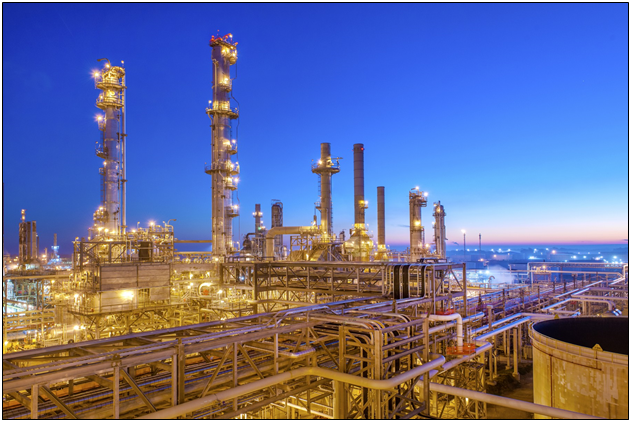U.S. oil refiners had another huge year in 2018, averaging 17.3 million barrels per day in refinery runs while its capacity expanded to almost 18.6 million barrels per day, according to data compiled by the U.S. Energy Information Administration (EIA).
As the U.S. became the number one producer of petroleum in the world in 2018 thanks in large part to the shale oil boom, oil refiners led the way by once again ramping up their capacity and putting to rest concerns about its ability to meet demand in the market.
In fact, current utilization of refining capacity is at about 93 percent, and it has not topped its high of 95.6 percent in 1998 in spite of there being more oil to refine.
Meaning, there’s still a lot of room for growth in this expanding industry, if the first month’s data for 2019 is any indication, with capacity rising to an all-time high of nearly 18.8 million barrels per day in January, an increase of nearly 200,000 barrels a day from that time last year.
Put another way, if you’re thinking about drilling a well, right now, you might want to do it in the United States because you are guaranteed to get your barrel to market rapidly no matter what the spot price is.
One area that will help further the industry along are International Maritime Organization (IMO) regulations set to go into effect in Jan. 2020 that will reduce sulfur content of emissions of bunker fuel utilized by cargo container ships to no more than 0.5 percent sulfur. The plus for refiners will be added sales for the lower-sulfur content fuel.
And U.S. refiners, already serving the single largest oil-consuming market in the world, will be there to meet the challenge, as refiners once again expand capacity to meet the demand, for example in Louisiana and Texas.
The U.S. already has about 2.8 million barrels per day of coking capacity needed to meet the market for lower-sulfur fuel. That’s not far off from the 3.3 million barrels per day of bunker fuel that is consumed currently, or 4.2 million barrels per day when existing lower-sulfur fuel demand is taken into account.
The tale however may lay overseas in terms of meeting the rest of the market. Those that make the investment ahead of time will be the biggest winners in the new cargo container ship fuel market. How refiners abroad respond to the change is another matter, and will determine how great of an impact on global prices there is.
Right now, the biggest loser of the new IMO regulations will be Russia, which exports the most higher-sulfur bunker fuel in the world. In 2017, it exported about 35 million tons or 702,000 barrels a day.
With an already robust market, supply should meet the demand rather quickly, meaning any spike in prices may only be temporary as it is ultimately offset by increased production and refining of the lower-sulfur fuels.
And if worst comes to worst, and overseas refiners cannot meet the demand, you can be sure U.S. refiners will do so in very short order. This might be the first regulation in history that boosted U.S. exports.
Robert Romano is the Vice President of Public Policy at Americans for Limited Government.








